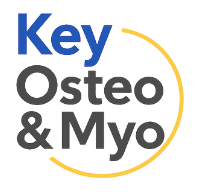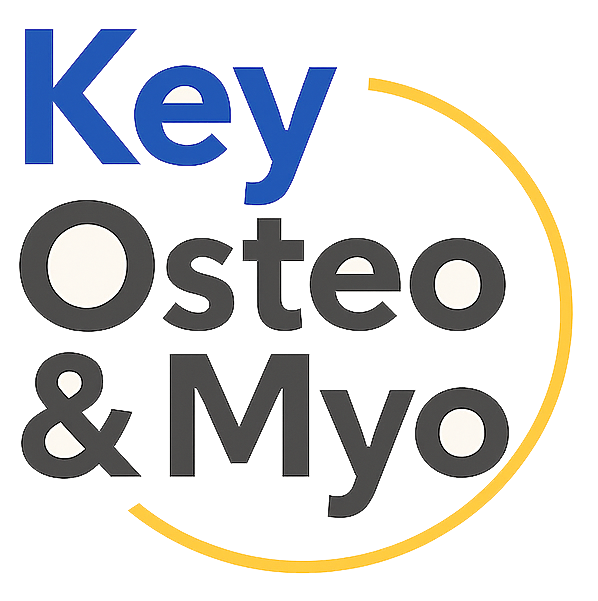





BPPV can affect people in very different ways, but there are certain hallmark symptoms that make the condition recognisable. Some individuals notice only mild dizziness, while others experience sudden, intense vertigo that interferes with even the simplest of daily activities. Because these sensations often appear without warning, they can be both unsettling and disruptive.





Although BPPV can appear suddenly and without obvious warning, there are several known factors that increase the likelihood of developing the condition. Understanding these underlying causes not only helps explain why symptoms arise but also guides how they can be managed or prevented from recurring.






Accurately diagnosing the cause of dizziness is essential, since vertigo may arise from a wide range of inner ear, neurological, or vascular conditions. At Key Osteopaths, we use a structured approach that combines thorough questioning, hands-on testing, and, when needed, onward referral to ensure nothing important is missed.









Rosie treated our baby boy for and it made a huge difference. After the treatment he started sleeping better and crying less. A big relif
Anna came highly recommended to me by a friend so I decided to go and see her about a muscle issue in my left arm. Anna was fantastic, she asked… read more all the right questions and gave all the right advice, after treatment I had the best arm workout I’d had in over 5 months with no pain in the morning that I usually would have suffered from. I should have gone to see her sooner ! I’m so happy and grateful for the treatment I have received. A big thank you from me and my left arm ! thanks Anna !!
Anna is a delightful and competent professional who gives first rate, comprehensive treatment at every visit. I went in as a “wonky donkey” and walked out feeling six foot… read more tall with a normal gait in my first visit! I have given her practice details out to many of my friends. Also, her new treatment rooms are a relaxing retreat from the hustle and bustle – an excellent place for monthly maintenance.




Fantastic service! Anna has worked her magic when I’ve been in real pain. She’s professional, honest and is always smiling – I couldn’t recommend more highly !

Q: Can osteopathy help with TMJ and jaw pain?
A: Yes, osteopathy can be an effective treatment option for TMJ and jaw pain. Osteopathic treatment focuses on restoring proper alignment, function, and mobility of the temporomandibular joint and surrounding structures. Through manual therapy techniques, joint mobilisation, and soft tissue manipulation, osteopaths can help relieve pain, reduce inflammation, improve jaw function, and promote healing.
Q: How many osteopathic sessions are usually required for TMJ and jaw pain treatment?
A: The number of osteopathic sessions required for TMJ and jaw pain treatment can vary depending on the severity of the condition and the individual’s response to treatment. Some individuals may experience relief after a few sessions, while others may require ongoing treatment over a longer period. The osteopath will assess your specific condition and develop a treatment plan tailored to your needs.
Q: Are there any side effects or risks associated with osteopathic treatment for TMJ and jaw pain?
A: Osteopathic treatment for TMJ and jaw pain is generally safe and well-tolerated. However, as with any manual therapy, some individuals may experience mild soreness or discomfort following treatment. These effects are typically temporary and resolve within a short period. It’s important to communicate any concerns or unusual symptoms with your osteopath during the treatment process.

Q: Can lifestyle modifications help in managing TMJ and jaw pain?
A: Yes, lifestyle modifications can play a supportive role in managing TMJ and jaw pain. Some helpful modifications may include practicing stress management techniques, avoiding excessive jaw movements (such as chewing gum), practicing good posture, avoiding hard or chewy foods, and applying heat or cold packs to the affected area. Your osteopath can provide specific recommendations based on your condition and lifestyle.
Q: Can TMJ and jaw pain be completely cured with osteopathic treatment?
A: The effectiveness of osteopathic treatment for TMJ and jaw pain varies from person to person. While some individuals may experience significant relief and improvement, others may find that symptoms are better managed but not completely eliminated. Osteopathic treatment aims to reduce pain, improve function, and enhance overall well-being. It’s important to have realistic expectations and work closely with your osteopath to achieve the best possible outcome.
Q: Can children receive osteopathic treatment for TMJ and jaw pain?
A: Yes, children can receive osteopathic treatment for TMJ and jaw pain. Osteopathic techniques can be adapted to suit the age and condition of the child, providing gentle and effective relief. It’s important to consult with an experienced pediatric osteopath who specialises in treating children to ensure safe and appropriate care.